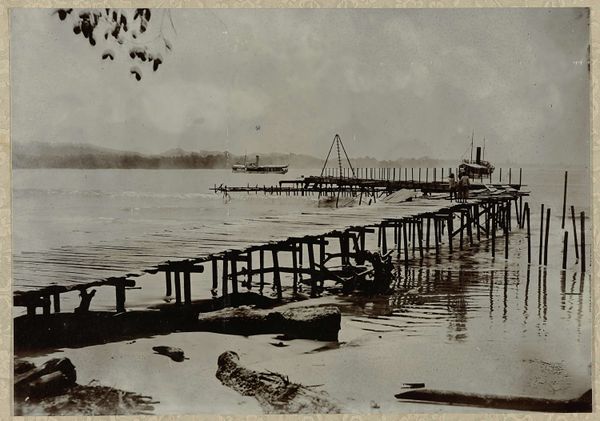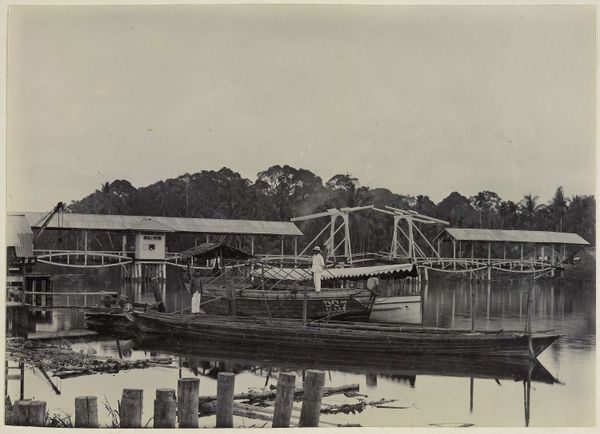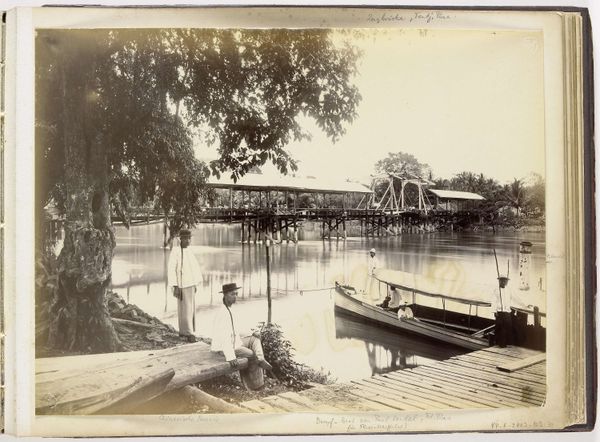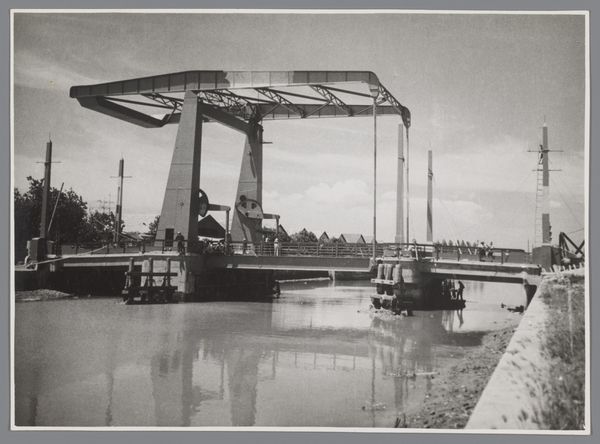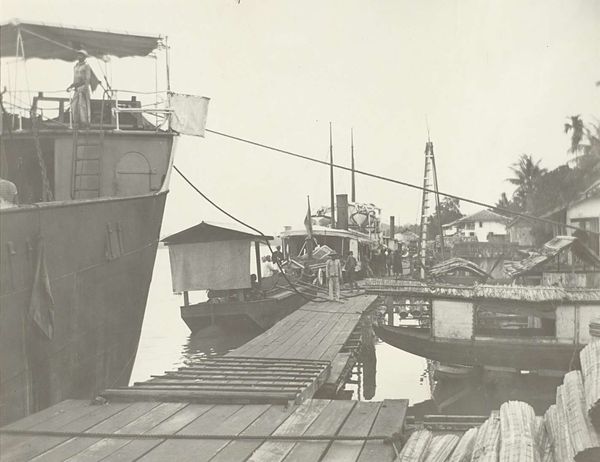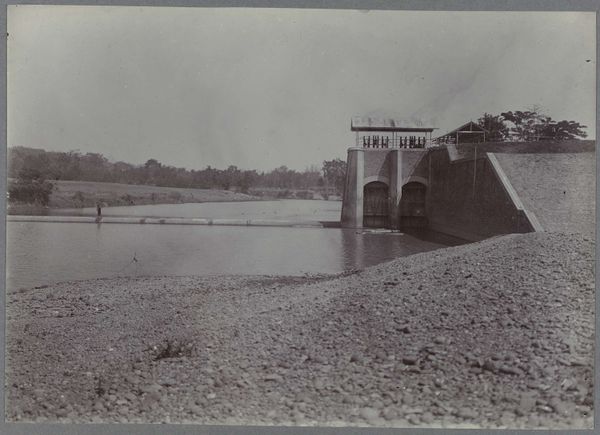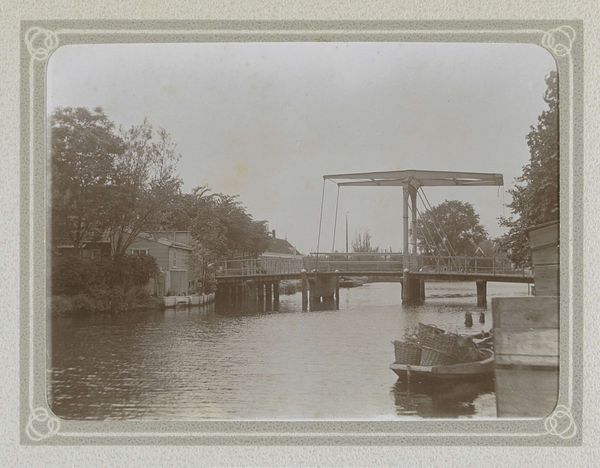
print, photography, gelatin-silver-print
# print
#
landscape
#
photography
#
orientalism
#
gelatin-silver-print
#
monochrome photography
#
cityscape
#
realism
Dimensions: height 23 cm, width 17 cm
Copyright: Rijks Museum: Open Domain
Curator: Let's examine this photograph, "Nederlandse gebouwen in Batavia," circa 1900, a gelatin-silver print. It captures a cityscape dominated by a distinctive drawbridge. Editor: My initial impression is one of stillness. The monochrome palette, the quiet water, it evokes a profound sense of suspended time. There is the colonial space and this very Dutch piece of infrastructure. Curator: Precisely, the formal composition emphasizes a clear distinction between the geometric rigidity of the Dutch-built bridge and the implied chaos of the river. Note how the structural lines draw the eye, compelling attention to its function as a nexus point between different spaces. The clarity reminds us that bridges, as visual structures, also represent movement. Editor: Yet that drawbridge itself is loaded with symbolism. In old Dutch paintings, we often see similar bridges acting as a threshold – a gateway from the known to the unknown. Consider that, here, it divides not only land and water but perhaps also cultures and ways of life in colonial Batavia. Curator: An insightful observation, it creates an intersection with orientalist views. The light, although subtle, is used in interesting ways here as well. It appears even, with an aim to avoid dramatic effect, a tool that may be said to render the scene, from a compositional point of view, accessible. Editor: But that soft light also contributes to a melancholic air, wouldn't you agree? I keep thinking about what Batavia represented - a meeting point, often fraught, between European ambition and Indonesian reality. The presence of the drawbridge is powerful within that history and the gelatin print imbues the image with a vintage aesthetic. Curator: Indeed, and let’s not overlook the water’s reflection, or how its texture adds a layer of complexity, softening the rigid architectural details of the bridge. Also, one wonders what social order existed here in 1900! Editor: In considering such elements, one gets an insight of the orientalist vision, to find and codify an ideal, one in the Western canon, within a very specific local landscape. And indeed, to reveal much about the Dutch preconceptions during the period. Curator: This work offers rich potential to interrogate structural components in art. Thank you, this dialogue proved to be interesting in further unlocking a number of fascinating ideas here. Editor: I concur. It's been enlightening to see how its symbolism operates within and reflects that intricate period.
Comments
No comments
Be the first to comment and join the conversation on the ultimate creative platform.
